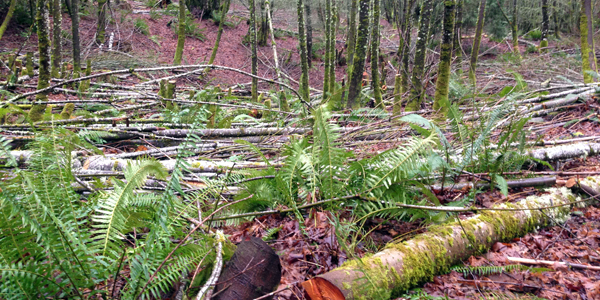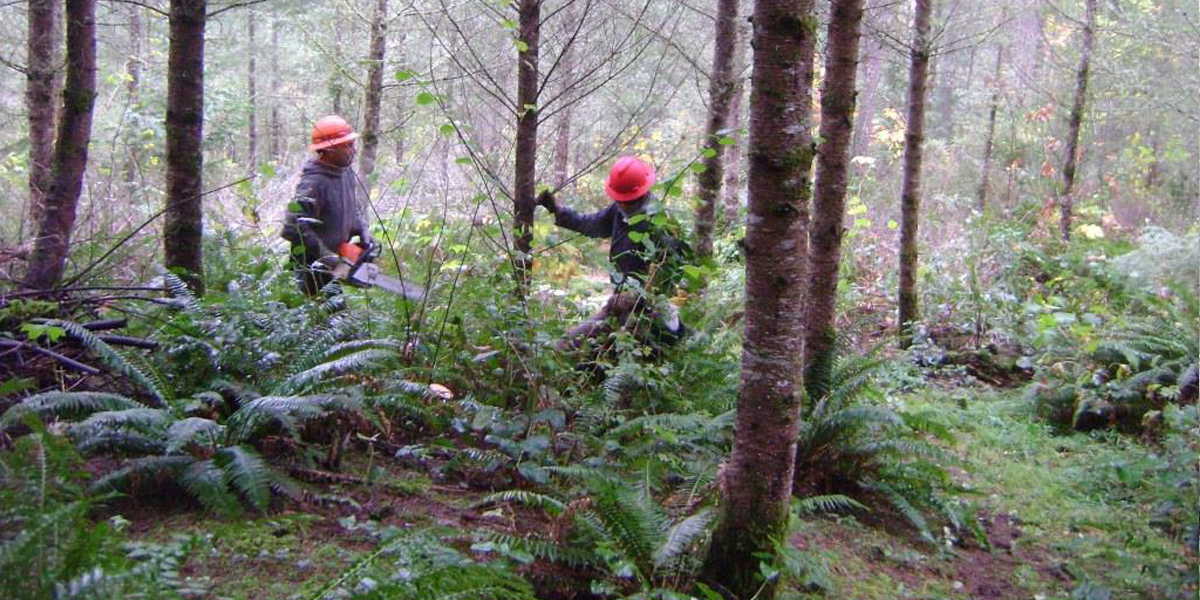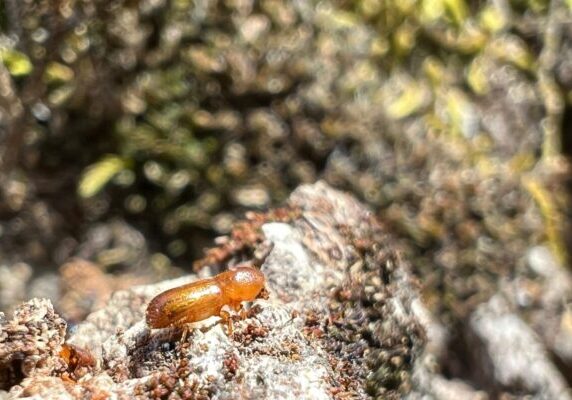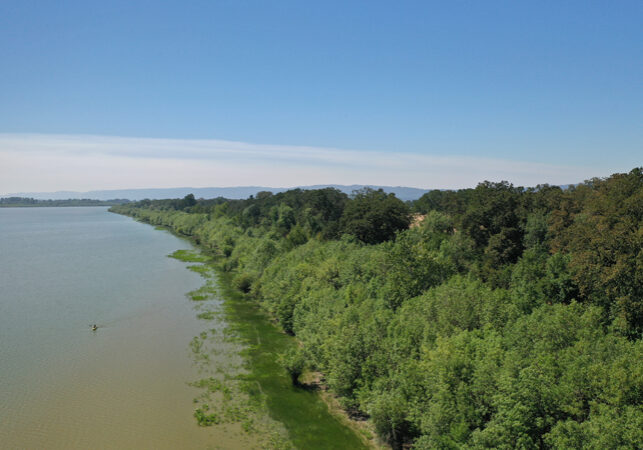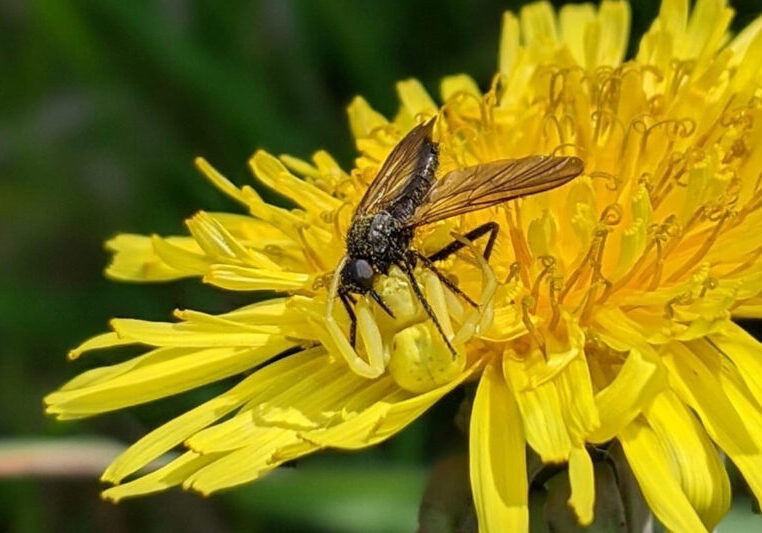Winter may seem like a time when there’s not a lot going on in the forest, so you may be inclined to kick back by the fireside and watch the rain fall outside. However, wintertime is actually one of the best times to take actions for improving your forest’s health.
The cold wet weather reduces wildfire risk, which means the use of machinery, such as chain saws and brush trimmers, is less likely to ignite a fire. Work done during the winter also avoids disturbing bird nests, which are typically active from April through August. So now’s the time to cut down invasive plant infestations, reduce brushy wildfire ladder fuels within 30 feet of your home, and prune up lower tree branches on younger Douglas fir trees. Weeds such as blackberry or Scotch broom growing along edges and gaps of the forest and ivy and clematis growing up trees are examples of ladder fuels since they provide a way for fire to move from the forest floor up into the canopy where it will cause much greater damage. Cutting alone won’t remove these weeds permanently, so be prepared to also dig up the roots or plan for later follow-up treatments. Conveniently enough, the moist soil makes removal of weed roots much easier too!
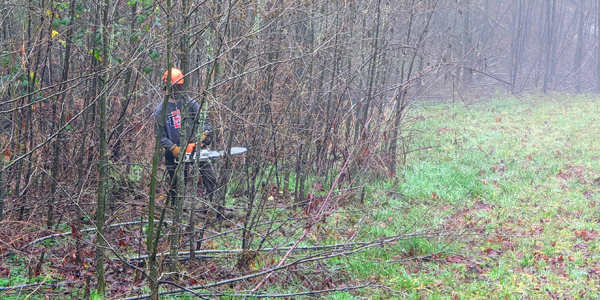
Winter is also a great time to find English ivy in your forest since the evergreen leaves of English ivy stand out more once our broadleaf trees have dropped their leaves and our diverse native wildflowers have also gone dormant. When you find small patches, go ahead and pull it from the ground and cut it off of the trees up to about 6 feet above ground. No need to pull vines down out of the tree; the cut vines will die on the tree. While you’re scouting for ivy, also keep an eye out for and pull seedlings of English holly and laurel.
One thing that’s at the height of activity in the forest during winter is the flow of streams. Culverts allow streams to pass under forest roads and driveways, however during winter storms, they are especially vulnerable to damage or failure as they can become clogged with soil, wood, and other debris. Poor culvert performance also leads to increased sediment entering our streams which can harm fish and other aquatic life. Culverts need annual maintenance, and we encourage you to inspect them a few times during winter to make sure they’re draining properly. If you stay on top of it, you’ll often be able to clear debris with a shovel or other hand tools.
Finally, winter and spring are opportune times to start planning for future forest health projects. If, for example, you are surprised to find an overwhelming amount of ivy that has been growing unnoticed, or you want to thin an overcrowded young forest stand and aren’t quite sure how to go about it, contact us and we may be able to help you craft a plan.
